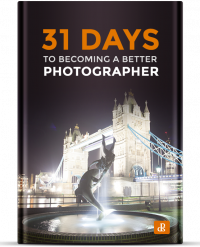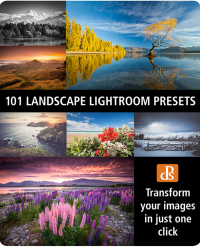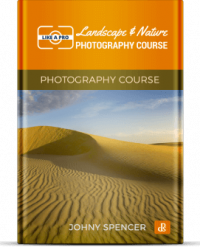How to Master Low Light Landscape Photography
By Rob WoodOver the years, low light landscape photography has come to dominate my interest in the craft and increasingly there is a larger portion of Light Stalking readers for whom the same is true.
And if the rise of certain magazines such as Outdoor Photographer and the popularity of such images on social media is anything to go by, then the genre of low light landscapes is in the middle of a bout of popularity too.

———-
This article is sponsored by Photzy’s Complete Guide to Long Exposure Photography. We will give you the basics in this article, but to dive deep into the craft, Photzy’s guide is highly recommended.
Take a look here.
———-For starters, I am not going to lie, you need to practice obsessively. All of the best low light landscapers have serious hours under their belt. And while you can get some quick wins (that we will discuss below) sheer exposure to the craft will sharpen your skills just like anything. Continuing to study blog posts like this one as well as any photo magazine articles or books you come across is also obviously going to get you up to speed too (don’t forget to take a look at our mammoth landscape photography guide too).
But here, I want to look at how to quickly get across the basics of this genre for 2 types of shots:
- Low light landscape photos with sharp stars
- Low light landscape photos with star trails

Gear for Low Light Landscape Photography
Now, you can really go to town when it comes to gearing up for low light landscape photography and it can get expensive quickly. But there is also a lot you can do with very basic kit. Let’s start with the gear you will need.Minimum Kit
- Camera Body – The best camera is the one with you. If it has manual mode where you can control the aperture, ISO and shutter speed, then that’s all you need.
- Lens – Wider is better but any lens is fine if you can get your desired scene into its field of view.
- Stabilisation – If we’re going really low-fi, then a plastic bag full of sand will suffice.
Ideal Kit
- Camera Body – Same as above, you need a camera body that allows you to shoot on manual. At the top end of town, the Nikons (D810, D850 etc) probably have the ascendancy for now, but really it's a matter of degrees and any DSLR or Mirrorless camera is just fine.
- Lens – Ideally you will probably want something in the 10-20mm range. I use a Nikon 14-24mm f2.8, but there are many other lenses that are good too. The 16-35 is very popular. But really, any lens is fine if it achieves the composition you want to get.
- Stabilisation – You probably want a nice big, heavy tripod as landscape shooting can get windy which will rock your camera around a bit and cause blurring.
- Remote Shutter Release – This also stops the potential for camera shake and unwanted blur.
- Neutral Density Graduated Filter – Now, this one isn't always needed, but if there is a significant difference between the exposure of the sky and the land then you will be glad you had one on hand.
Other Kit
Landscape photographers tend to like certain phone apps to help with their research and calculations.- The Photographer's Ephemeris – This is probably the grandaddy of landscape photography planning apps.
- PhotoPills is also quite popular for planning.
- Dark Skies – If you want to photography dark skies and perfect stars.
- Sun Surveyor – If you want to know exactly how the sun is going to affect your shooting location at certain times.
Other Low Light Photography Scenarios
Now, in low light landscapes, there are several conditions you will be shooting in. In this blog post, we're going to stick to basic landscapes and skies for low light shooting.Here are several other lessons that are worth looking at for specific scenarios, but more suited to photographers who are looking to emphasise the sky in their images:
Even if you're not planning shooting one of those scenarios, those articles are worth a read as they will also teach you to avoid certain outcomes in your images (star trails etc).
Shoot a Basic Low Light Landscape Photograph
Now, this is going to assume you want to shoot a basic landscape with a sky showing sharp stars (not trails). This process should end up giving you exactly that.
It is very difficult to say exactly what settings you will need in a situation without actually being there to measure the light – every scene is different. With that being said, let's look at some starting settings that you can work backwards from (It's a very good idea to read our article on the 500 rule for this part).
You will want to start with settings roughly like these to take some test shots to see what the light is doing to your exposure. Then you can adjust from there. For these test shots, your settings will be somewhere around these:
- Shutter Speed – Set this first as this is what determines whether or not you get star trails. 500/Focal length is the rule (so if you’re shooting at 20mm, the shutter speed will be 25 seconds (500/20). (Yes, this varies according to sensor crop so it’s best to take a look at the table in our 500 rule article).
- ISO – Start at 3200
- Aperture – Shoot wide – start at f/2.8.
What then?
After you have taken the shot, you will want to probably make a few adjustments to your settings. These are the common problems:
- Did the stars in your image trail? (Zoom in on your viewfinder). If so, your shutter speed was too long.
- Is the shot too dark or too light? Adjust your ISO accordingly.
Shoot a Long Exposure Low Light Landscape Photograph
Now if you want to keep the shutter open for a long time and capture those star trails, then you need to do things quite differently. Because you’re going to leave the shutter open longer, we can shoot with lowers ISO (hence lower noise in the image) and narrower aperture if we want to.
- ISO: 3200
- Aperture: f/8
- Shutter Speed: 30 seconds
In very general terms, the aim, once you are happy with your test shot exposure, is to keep reducing the ISO and compensating for that by increasing the shutter speed. (Getting to know the exposure triangle for this is going to help a lot).
For example, going from ISO 3200 to ISO 1600 would require you to double the shutter speed.
Making these adjustments will result in a long shutter speed and an image with low noise that captures the movement of the star (star trails). You will need to use Bulb mode on your camera for exposures longer than 30 seconds (use a remote shutter release of the delayed timer on your camera to help avoid moving the camera and causing unwanted blur).
A Few Other Tips
Camera Mirror Lock-Up – If you’re lucky enough to have a camera with this function, then you should consider using it. It stops the problem of your camera shaking during the shutter release motion which can often cause slightly blurry shots for long exposures.
Post Production – If you have shot in raw format (and you should) then you can do a lot to finish off your images in post-production. Often, you can draw out a lot more detail than the initial image shows, so don't be shy about playing with your images in Lightroom.

If you’re anything like me, you’re going to fall in love with the genre of low light landscape photography. A lot about it from the challenge through to the resulting images and even how people react to them can be extremely satisfying.
One of the things I find most challenging is that it covers several blocks of learning – you need to have your head around landscape photography, long exposure photography and camera craft.
If you’re interested in really diving deep on long exposure landscapes (and long exposure in general),



https://resources.digital-photography-school.com/ref/937/
No comments:
Post a Comment
Note: Only a member of this blog may post a comment.